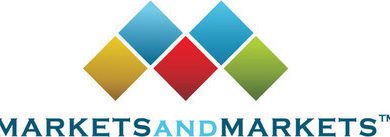DUBLIN–(BUSINESS WIRE)–The “Europe Refractory Epilepsy Treatment Market: Analysis and Forecast, 2025-2035” report has been added to ResearchAndMarkets.com’s offering.
The Europe refractory epilepsy treatment market is projected to reach $2.82 billion by 2035 from $1.34 billion in 2024, growing at a CAGR of 6.98% during the forecast period 2025-2035. The paradigm for treating refractory epilepsy in Europe is changing to one that is more individualised and makes use of each patient’s clinical profile, genetic markers, and lifestyle choices.
Beyond the conventional ‘one-size-fits-all’ approach, European healthcare providers can create customised treatment plans by combining developments in genomics, molecular diagnostics, and advanced data analytics. In addition to improving seizure control and lowering side effects, this precise technique also minimises expensive trial-and-error dosing.
The market for refractory epilepsy treatments in Europe is rapidly changing as medical professionals and healthcare systems shift towards more individualised, technologically driven care for individuals whose seizures are still uncontrollable with first-line treatments. The market, which includes advanced pharmaceuticals, neuromodulation devices, and emerging biologics, is characterised by drug-resistant cases, which affect approximately 30% of the estimated 6 million individuals with epilepsy on the continent. Investment in innovative treatments and diagnostic tools that facilitate earlier detection and intervention is being driven by growing awareness of the significant clinical and financial burden of refractory epilepsy.
Next-generation antiseizure drugs (like cannabidiol-based adjuncts and novel molecular entities) and neuromodulation technologies (like deep brain stimulation (DBS), vagus nerve stimulation (VNS), and responsive neurostimulation (RNS)) that provide alternate methods of controlling seizures are important market segments. While strict EU Medical Device Regulation (MDR) and EMA oversight guarantee high levels of safety and efficacy, adoption is being aided by Western Europe’s favourable reimbursement environment and Central and Eastern Europe’s growing healthcare spending.
Molecular diagnostics, AI-powered predictive algorithms, and genomic profiling are some of the technological advancements that are enabling precision treatment paths, decreasing trial-and-error prescribing, and increasing patient outcomes. However, obstacles still exist: a lack of specialised epilepsy centres, high therapeutic costs, and unequal access across regions impede expansion. However, cooperation between clinical experts, biopharma firms, and academic research networks is creating the foundation for more focused, successful interventions and making the treatment of refractory epilepsy a crucial area of attention within the larger neurology industry in Europe.
How can this report add value to an organization?
- Product/Innovation Strategy: The report offers in-depth insights into the latest technological advancements in refractory epilepsy treatment, enabling organizations to drive innovation and develop cutting-edge products tailored to market needs.
- Growth/Marketing Strategy: By providing comprehensive market analysis and identifying key growth opportunities, the report equips organizations with the knowledge to craft targeted marketing strategies and expand their market presence effectively.
- Competitive Strategy: The report includes a thorough competitive landscape analysis, helping organizations understand their competitors’ strengths and weaknesses and allowing them to strategize effectively to gain a competitive edge in the market.
- Regulatory and Compliance Strategy: It provides updates on evolving regulatory frameworks, approvals, and industry guidelines, ensuring organizations stay compliant and accelerate market entry for new Refractory Epilepsy Treatment solutions.
- Investment and Business Expansion Strategy: By analyzing market trends, funding patterns, and partnership opportunities, the report assists organizations in making informed investment decisions and identifying potential M&A opportunities for business growth.
Europe Refractory Epilepsy Treatment Market Trends, Drivers and Challenges
Trends
- Rising uptake of neuromodulation therapies (Vagus Nerve Stimulation, Responsive Neurostimulation, Deep Brain Stimulation) alongside pharmacologic options
- Growth in cannabidiol (CBD)-based and other novel adjunctive medications following EU approvals
- Expansion of precision medicine approaches, including genetic profiling to tailor treatment regimens
- Increased use of tele-health and remote monitoring platforms for treatment adherence and seizure tracking
Drivers
- Persistent unmet need: ~30% of epilepsy patients remain drug-resistant despite multiple AED trials
- Strong R&D pipeline and strategic partnerships between pharma and device manufacturers
- Supportive reimbursement frameworks and increasing healthcare budgets in many European countries
- Patient advocacy and greater disease awareness driving early specialist referrals
Challenges
- High cost of advanced therapies and unequal access across Western versus Eastern Europe
- Complex regulatory environment for novel biologics and devices under EU MDR
- Limited number of specialized epilepsy centers and trained multidisciplinary teams
- Variability in national treatment guidelines and slow adoption of cutting-edge options in some markets
Key Market Players
- UCB S.A.
- Novartis AG
- LivaNova PLC
- GSK plc.
- Biocodex-SP
Key Attributes:
| Report Attribute | Details |
| No. of Pages | 60 |
| Forecast Period | 2025 – 2035 |
| Estimated Market Value (USD) in 2025 | $1424.3 Million |
| Forecasted Market Value (USD) by 2035 | $2822.8 Million |
| Compound Annual Growth Rate | 6.9% |
| Regions Covered | Europe |
Key Topics Covered:
Executive Summary
Scope and Definition
1 Market: Industry Outlook
1.1 Major Trend
1.2 Trend in Refractory Epilepsy Treatment Market
1.2.1 Emerging Targeted Therapy for Refractory Epilepsy Treatment
1.2.2 Business Strategies
1.2.2.1 Product Developments
1.2.2.2 Market Developments
1.2.3 Corporate Strategies
1.2.3.1 Partnerships and Joint Ventures
1.2.4 Market Opportunities
1.2.4.1 Advances in Neuromodulation Devices in the Refractory Epilepsy Treatment Market
1.2.4.2 Shift from Neo-Adjuvant Approaches Driven by Diagnostic Advancements
1.3 Start-Ups Landscape
1.3.1 Key Start-Ups in the Ecosystem
1.4 Pipeline Drugs, Refractory Epilepsy Treatment
1.5 Trends
1.5.1 Emerging Targeted Therapy for Refractory Epilepsy Treatment
1.6 Market Dynamics
1.6.1 Trends, Drivers, Challenges, and Opportunities: Current and Future Impact Assessment
1.6.2 Market Drivers
1.6.2.1 Increasing Prevalence of Drug-resistant Epilepsy and Ever-expanding Pipeline of Novel Therapeutics
1.6.2.2 Growing Impact of Orphan Drug Development and Role of Advocacy Groups and Awareness Programs
1.6.2.3 Emerging Treatment Modalities in Refractory Epilepsy
1.6.3 Market Restraints
1.6.3.1 Off-Label Medication Practices Hindering the Refractory Epilepsy Treatment Market
1.6.3.2 High R&D Cost as a Barrier to New Entry for New and Small-Scale Companies
1.6.4 Market Opportunities
1.6.4.1 Advances in Neuromodulation Devices in the Refractory Epilepsy Treatment Market
1.6.4.2 Shift from Neo-Adjuvant Approaches Driven by Diagnostic Advancements
1.6.5 Market Challenges
1.6.5.1 Financial Constraints on Patient Access
1.6.5.2 Underdiagnosis of Patients who Meet the Criteria for Drug-Resistant Epilepsy (DRE)
2 Region
2.1 Regional Summary
2.2 Europe
2.2.1 Regional Overview
2.2.2 Driving Factors for Market Growth
2.2.3 Factors Challenging the Market
2.2.4 Germany
2.2.5 France
2.2.6 Italy
2.2.7 Spain
2.2.8 U.K.
2.2.9 Rest-of-Europe
3 Competitive Benchmarking & Company Profiles
3.1 Overview
3.2 Top Products/Product Portfolio
3.3 Top Competitors
3.4 Target Customers
3.5 Strategic Positioning and Market Impact
3.6 Analyst View
3.7 Pipeline and Research Initiatives
4 Research Methodology
4.1 Data Sources
4.1.1 Primary Data Sources
4.1.2 Secondary Data Sources
4.1.3 Inclusion and Exclusion
4.1.4 Data Triangulation
4.2 Market Estimation and Forecast
For more information about this report visit https://www.researchandmarkets.com/r/8f38md
About ResearchAndMarkets.com
ResearchAndMarkets.com is the world’s leading source for international market research reports and market data. We provide you with the latest data on international and regional markets, key industries, the top companies, new products and the latest trends.
Contacts
ResearchAndMarkets.com
Laura Wood, Senior Press Manager
[email protected]
For E.S.T Office Hours Call 1-917-300-0470
For U.S./ CAN Toll Free Call 1-800-526-8630
For GMT Office Hours Call +353-1-416-8900





